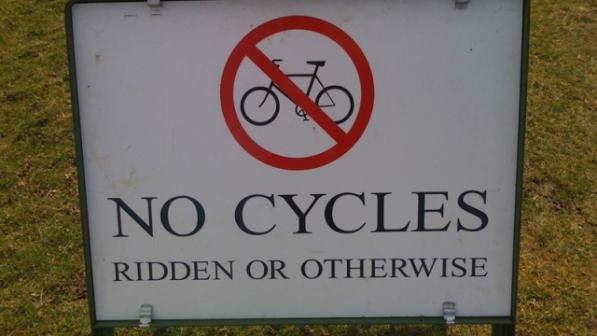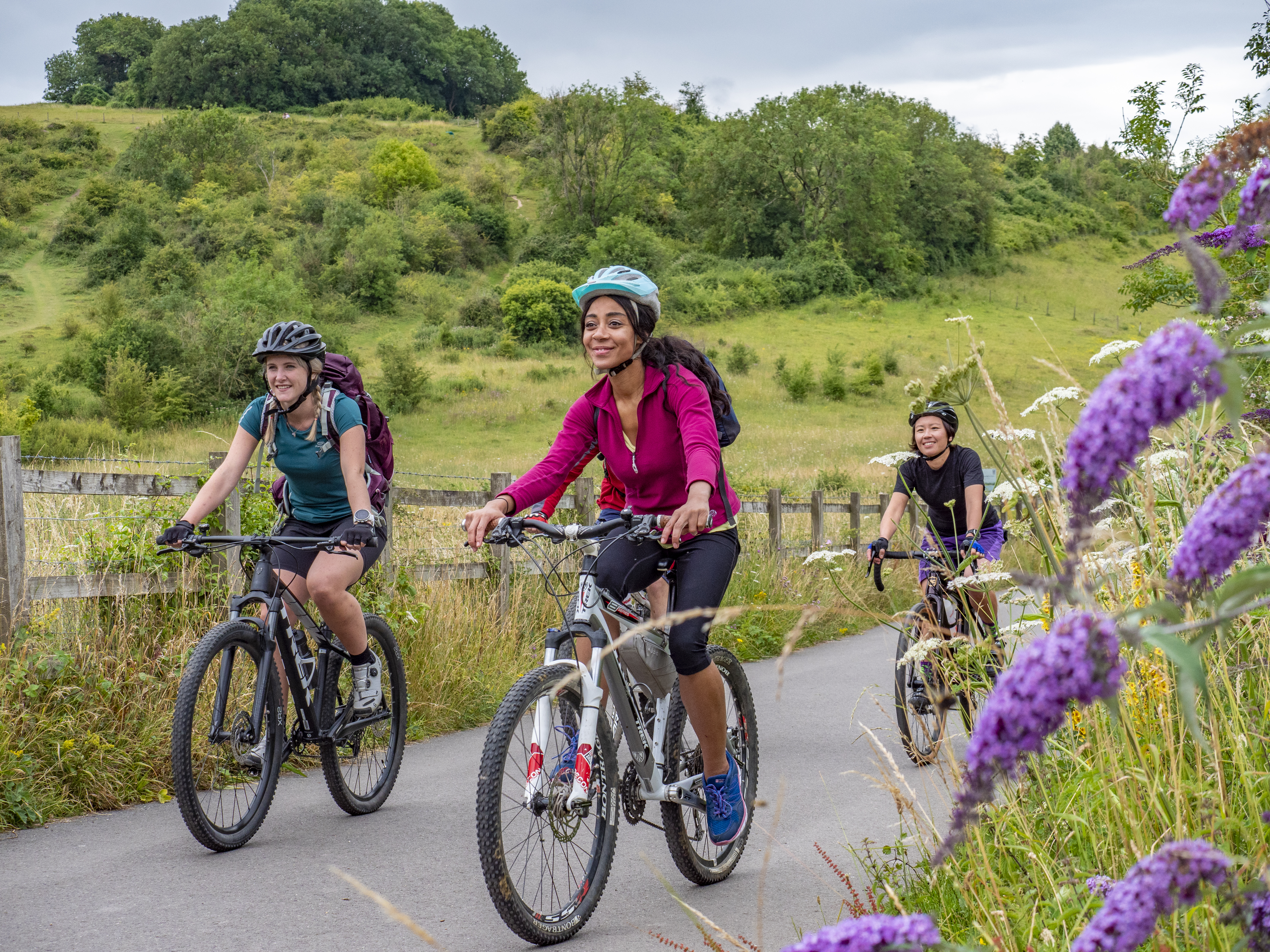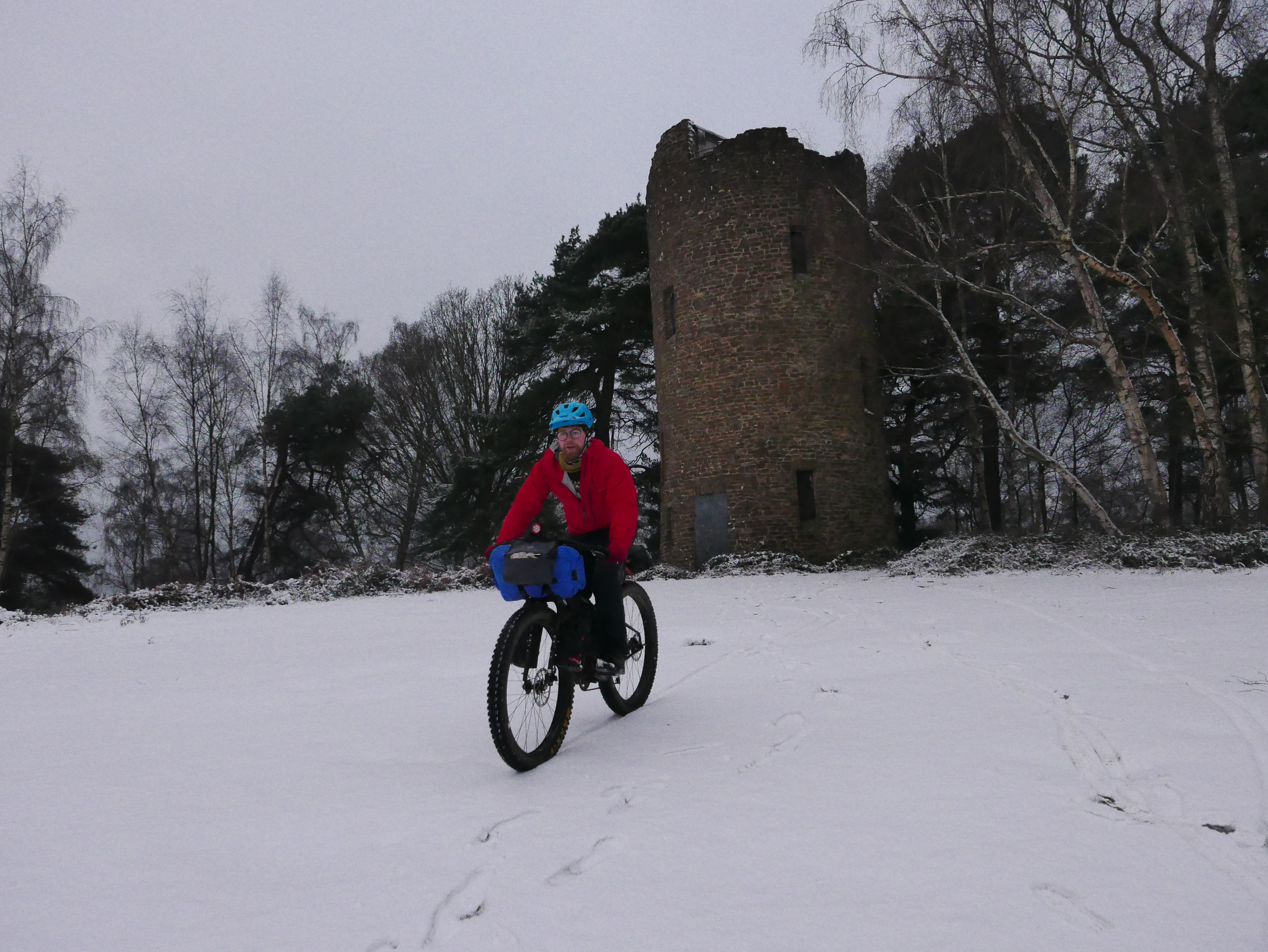Off-road survey: what we've learnt

The survey attracted a huge response, with 11,482 people taking part in total - see press release and infographic. We can't be sure about how representative the participants are of the overall off-road cycling population. However, the sheer size of the response suggests it's a pretty good snapshot of what regular off-road riders are doing - and what they wish they could do more of!
Who responded?
The respondents were predominantly white British (92% of respondents) and male (87%). This broadly corresponds with other recent surveys of off-road cycling participation. 28% of respondents have household earnings in the £50-100K bracket, with another 28% in the £30-50K range, though only 7% had household earnings above £100K. 38% of them have degrees, with 23% having postgraduate or higher qualifications. The majority of them (60%) have been riding off-road for more than 10 years, though 6% had been doing so for less than two years and 2% had "just started". On average, they say they cycle off-road for about four hours a week.
Many respondents are members or supporters of either Cycling UK (38%), British Cycling (40%), a local cycling club (43%), Sustrans (14%) or a local cycle advocacy group (11%). 30% have at some point volunteered on trail building and/or maintenance work, with another 8% doing voluntary advocacy work.
These data may reflect the demographics of the networks used to publicise the survey (i.e. Cycling UK's own members, local off-road riding groups and the readers of off-road magazines), rather than the off-road cycling population overall. However, they do not fit the media stereotype of mountain-bikers as energy-junkie teenagers or twenty-somethings. Some of them may have fitted that mould 15-20 years ago, but off-road riding has clearly matured a lot in the meantime.
What bikes do they use?
Discussions with the bike trade on sales suggest that this demographic is borne out by sales figures. Meanwhile, the survey itself told us that most respondents own 2 or 3 bikes (28% and 26% respectively), with just 11% having only 1 bike. 34% have 4 bikes or more. The type of bike most commonly ridden off-road was a full-suspension mountain bike (58% of respondents), with hard-tail mountain bikes just behind (on 56%). 12% used cyclocross-style bikes, while 15% used road, touring or hybrid bikes.
There is a need to address questions about whether the image of the sport is correctly portrayed in our own cycling media. It would appear that a shift in advertising and sales, to better target the adventure and exploration side of mountain biking, may be long overdue.
The value of off-road riding
The vast majority of respondents said that off-road cycling is "very important" (58%) or "fairly important" (32%) for their physical health, with an even higher number (66%) saying it is very important for their mental health and well-being. 61% said off-road cycling is their primary form of exercise, while 12% of respondents said they have a disability or chronic health condition. This highlights the value of the culture and passion which has grown up around off-road riding in retaining and engaging participants.
On the other hand, 70% do also participate in on-road cycling. Other popular activities were rambling and low-level hiking (56%), hill-walking or mountaineering (46%) and dog-walking (31%).
The survey also produced useful figures on how much off-road riders spend, e.g. on food, accommodation and indeed on their bikes. We will look at these more closely in the coming weeks.
What types of trails do they ride on? And is it all legal?
The trail-types that riders use were pretty evenly spread between shared-use trails (e.g. routes on Sustrans's National Cycle Network), dedicated MTB trails (e.g. at Forestry Commission trail centres), 'higher rights' trails (i.e. bridleways or byways, where there are rights of way for cycling), and footpaths (where cycling may be a trespass against the landowner, but is usually not a criminal offence - n.b. 'footpaths' are not the same as 'footways', i.e. pavements alongside roads, where cycling is prohibited). 'Higher rights' trails were the trail-type most likely to be used "at least weekly" (56% of respondents), followed by designated trails (e.g. Sustrans routes, 47%) and undesignated trails (40%).
But 34% said they cycled on footpaths at least once a week, with only 21% saying they never rode on footpaths. For those who rode on footpaths, the most common reason given for doing so was "Lack of choice or convenience" (64%), although "To avoid traffic danger" was close behind (52%). Other reasons given were "Regard the law as outdated" (42%), "Bridleways or byways damaged by horses or vehicle tracks" (26%) and "Wasn't aware of rights of way distinctions" (13%). 18% said they felt bridleways and byways were "too tame".
It was also notable that 36% said they cycled at least once a week on trails whose status they didn't know - with only 13% saying they never did this. This highlights that many off-road cyclists are often unaware of whether have legal rights to use the trails they are riding on, though it is also clear that many are consciously deciding to ride on footpaths out of frustration with the woefully inadequate rights of way networks currently available to them.
Problems encountered
An emphatic 74% of respondents felt that the existing public rights of way network is not suitable for modern cycle usage. 85% said they "often" or "sometimes" found it difficult to put together a legal route.
Yet, despite the widespread use of footpaths and the perception that this inevitably creates conflict, 49% of respondents said they had experienced no conflict within the past two years. Nevertheless, 36% had faced verbal conflict, while 30% had experienced minor trail sabotage (e.g. logs left on trails). More serious sabotage had been experienced by 4%, while 2% had faced physical aggression.
Where do respondents most enjoy riding?
The trail-type most strongly preferred by respondents was single-track (79%), followed by technical trails (63%). Double-track and family routes (e.g. forest trails or farm tracks) were still popular though (33%), with off-road touring ((27%) and "downhill / jumps" (25%) not far behind.
As for settings, broadleaf woodland was the environment which respondents were most likely to "enjoy a lot" (78%), followed by coniferous woodland (63%), then moorland / upland (55%). Respondents were more luke-warm about farmland (44% said "It's OK", while 8% said they don't enjoy it) and riversides or canals (38% said "It's OK", with 7% not enjoying them).
Of the major owners of access land, the most commonly used were Forestry Commission sites, with 29% using these at least weekly and another 32% using them at least monthly. Land owned by the National Trust was also widely used (14% at least weekly, another 18% at least monthly), as was land owned by local wildlife trusts (13% at least weekly, 17% at least monthly). Ministry of Defence and Crown Estate lands were least used, with 63% and 54% of respondents respectively saying they never rode on these sites. This may reflect their limited distribution, and we intend to do further analysis on where cyclists using these lands are based.
Home or away?
Off-road riding is widely perceived to be about putting the bikes on the back of a car. Yet, when asked how they got to the start of their rides on the rights of way network, 67% said they did so by cycling from their front door.
It's a different matter though for trail centres, with 42% saying that most of their trail-centre rides involved a car journey of more than an hour.
Trail centres were the most popular "away" venues, particularly in Scotland and Wales, though National Parks were also popular in England. There was significant variation in the relative popularity of National Parks, long-distance linear routes, bike parks, rural rights of way and open land between the four nations of the UK and other countries. Most respondents said their "away trips" were typically for just one day (50%), though 16% would typically stay for a night away, 20% staying away for two nights and 13% staying away for longer than this.
The most important factor in deciding on an "away" venue was the quality of trails (92% said this was important or very important), followed by technical difficulty (65%), car parking (62%) and waymarking (55%). Cafes and toilets were more likely to be seen as "important" (30% in both cases) rather than "very important" (7% and 8% respectively), while showers and bike wash facilities tended to be seen as not important (by 57% and 51% of respondents respectively). Only 14% said that public transport access was important or very important.
The long distance trail which respondents were most likely to have ridden was the South Downs Way (19%), closely followed by the Coast to Coast route (17%) and the Pennine Bridleway (14%). The routes which people most want to ride in the future were the Coast to Coast (58%), the West Highland Way (54%), the Pennine Bridleway (55%) and the Trans-Cambrian Way 47%. This indicates significant demand for long distance routes. Given that only two of our fifteen ‘national trails’ are currently fully cycle-accessible, this strongly suggests there is untapped potential to develop this form of riding.
What matters most?
Although we previously noted that respondents were a lot more likely to have volunteered as trail-builders or maintainers (30%) than advocates for off-road riding (8%), they were more likely to want off-road advocacy groups to focus on increased access: 54% said this was their no.1 priority. Promoting responsible riding was typically respondents' 2nd highest priority, followed by funding, maintaining the network and trail-building.
Asked what would change if cycling on footpaths was made legal, 68% said they could enjoy a greater variety of routes, while 64% said they could create better routes, and 61% said they could avoid busy roads.
There's more to come...
There is still plenty more information to come out of this survey. However the initial results have already demonstrated the appetite to increase and improve the quality of off-road access. We will use the results to strengthen the case for providing greater opportunities for more people to cycle, particularly close to home. This would help maximise the physical and mental health benefits that cycling provides, while strengthening local economies too.



